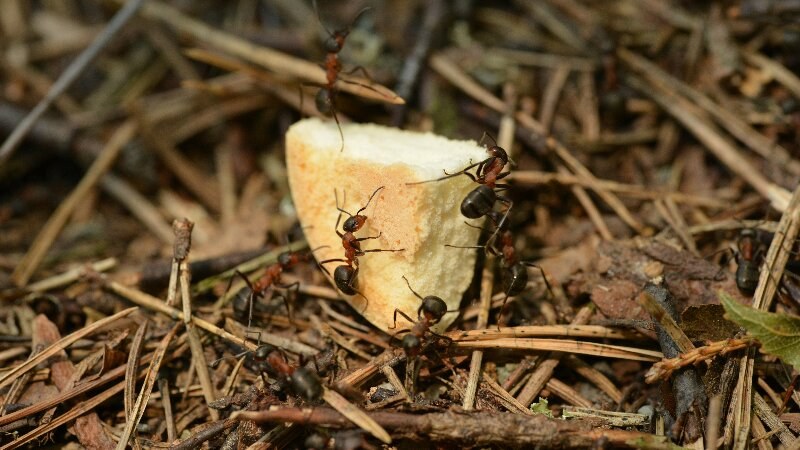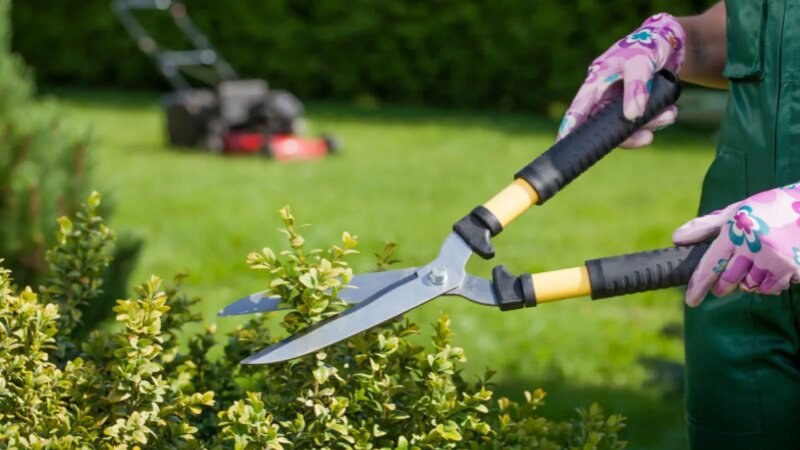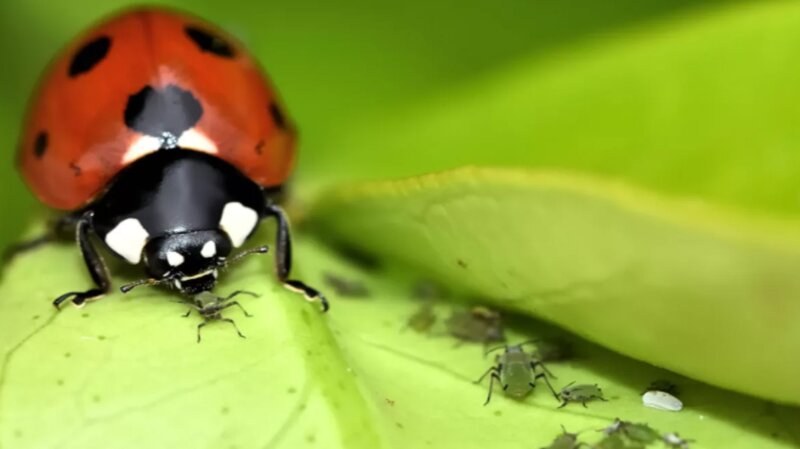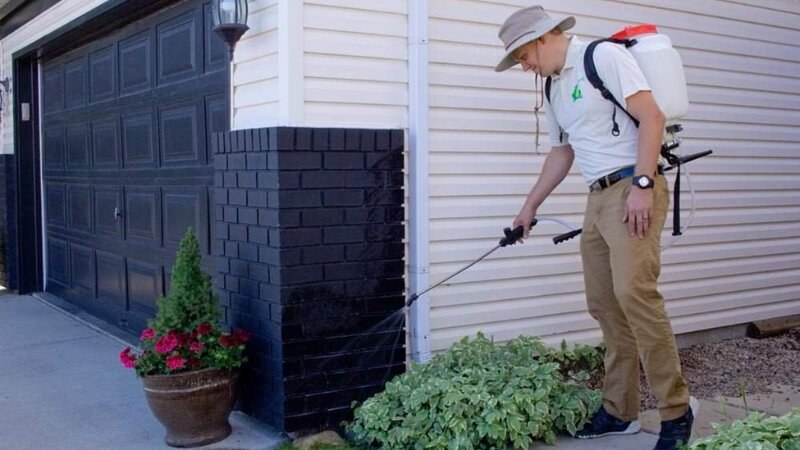Send the Ants Marching! How to Get Rid of Ants [A Complete 2024 Guide]
Reading time: 8 minutesAnts are an extremely pesky pest to deal with. No matter how clean you keep your house and yard, they always seem to find a way inside.
The best way to get rid of ants is to use a professional pest control company that can help you identify and remove the source of the problem. There are some things you can do for your home to deter all types of ants and control them without having to resort to insecticides. This blog will explore how you can send the ants marching.

Types of Ants You’re Dealing With
Before we dive into how to get rid of these insects, it’s important to understand the types of ants. The treatment will vary depending on the species. While there are over a hundred species of ants found in Canada, these are the most common ones you’re probably dealing with:
Pavement Ants
Pavement ants, usually pale brown to black, are trailing ants about 2.5–3 mm in size and are known to be super aggressive. They feed primarily on waste and food leftovers and nest along pavements such as driveways, sidewalks, garages, and foundations.
During winter, they can enter homes through tiny openings in doors, windows, walls, or floors in pursuit of food. While their sting is not a threat, they can contaminate food and pass on bacteria and disease.
Pharaoh Ants
Pharaoh ants, or sugar ants or budding ants, are tiny—about 1.5–2 mm in size and light yellow to brown. The queen ant can be 4mm and reddish.
Originally from the Afrotropic zone, these ants look for heated structures. They can infest quickly and quietly as they multiply through several parallel colonies, a process called budding. The queen ants live and mate internally; each colony is home to over 2,500 ants.
Pharaoh ants can be found in areas with hot and humid temperatures, such as between the walls, pipes, drains, wiring, books, behind boards, and inside switches. While their bites are not dangerous, they can cause structural damage.
Thief Ants
Thief ants, or grease ants, are 1.3–1.8 mm long. The queen ant can be over 6mm in size. Often confused with Pharaoh ants, thief ants are yellow to light brown, too. They’re called thief ants as they steal pupae, larvae, and food from other colonies. Also, their food preference is grease, which is why they are called grease ants.
Owing to their small size, thief ants can find their way into sealed food containers and are super hard to trap. They forage far and wide in search of food and can be found in walls, piping, rocks, under floorboards, and near greasy appliances. Indifferent to sweets, these ants build tunnels between colonies for consistent food supply and may go unnoticed for a long time while thriving within building structures.
Odorous House Ants
Odorous house ants, also known as coconut ants or stink ants, are 2–3 mm in size and dark grey to brownish. They derive their name from the rotten coconut-like smell they give off when crushed or killed. Unlike other ants, they can easily adapt to and thrive in diverse environments and relocate colonies to survive harsh weather.
Odorous ants are attracted to sweets and leave a trail to help other ants follow. They find and carry food such as fruits, vegetables, crumbs, dairy items, and other food debris to the colony.
Argentine Ants
Argentine ants are about 3–5 mm in size and dark brown to black. Queen ants can be up to 12 mm in size. These ants are aggressive and invasive, attacking and feeding on other species, including ants. With the ability to live long, Argentine ant colonies contain multiple queen ants that can live for several years and maintain colonies in the same place.
Attracted to grease and sweets, they prey on small insects such as spiders, beetles, caterpillars, sap-sucking insects, and other food items. Their bite is not venomous but can damage plants and cause food contamination.
Carpenter Ants
Carpenter ants are 6-25 mm in size and reddish brown to black. Easily recognized by size, these ants have powerful jaws and can chew through wood to form tunnels and damage wooden structures. If you spot a few or notice sawdust, it could mean you have a colony nearby. A fully mature colony has about 3,000 worker ants.
Carpenter ants are attracted to meats, sugary items, pet foods, and greasy spills. They are also attracted to moisture and dead wood and can be found on porches, beneath decks, within roofs, in trees, and on wood logs and stumps.
Now that you know the common ant species, their behaviour and life patterns, you also know that food is the root cause of most ant problems. For effective ant control, some indoor housekeeping is an absolute must!
Things You Can Do To Avoid an Ant Infestation
Indoor Housekeeping
One of the best ways to avoid an ant infestation is by keeping your house clean and tidy, so good housekeeping is the most important part of keeping ants away. Let’s go into details:
Maintain Cleanliness
Food crumbs, spills, and open food packaging attract pests. If you have toddlers or pets, be extra vigilant with food debris around the house. Proper and prompt cleaning is essential in areas where food is consumed and stored. Also, clean and clear appliances and areas that may produce or accumulate grease.

Store Food Properly
Always store food in airtight containers or keep it covered. This includes pet food and fresh items. To prevent any possible scents from escaping, sealed packs and tightly sealed garbage cans are recommended for food items being disposed of.
Regular Inspection and Control
Keep a lookout for any cracks, openings, breaks, or damage. If you observe any usual noise, trails, debris, or moments, do not ignore them. Seal any possible entry points and undertake any necessary repairs as they arise.
Limit Moisture
If there are any water leaks, get them fixed. Keep the drainage clean. Also, take care of the ventilation in the house and use dehumidifiers in damp areas.
Outdoor Housekeeping
So you’re practicing proper housekeeping inside your home, but what about your yard? There are a few things you can do to make your yard and home less of a target for ants:
Trim Vegetation
Tree branches, bushes, and leaves touching the house create bridges for pests to travel into the house. Trim any growth too close to windows, doors, and the roof, and keep planters at a distance.

Seal Entry Points
Take a walk outside of your home to identify any places or spaces pests may be able to get into. Once you have identified the problem areas, you will want to invest in a caulking gun and some caulk (make sure it’s rated for outdoors and waterproof).
Remember to follow the caulk directions and seal any gaps or cracks around the outside of your home. For larger holes or cracks, fine wire mesh may be used to protect them from pests.
Windows and doors are a favourite entry point for ants; make sure the weather-stripping on your doors and windows is in good condition. If it’s cracked or not creating a proper seal, it's time to replace the stripping as soon as possible.

Eliminate Standing Water
Ants are highly organized social insects, and their colonies operate on a ‘division of labour’—basically, different ants perform different roles assigned to them. Foraging ants are responsible for finding food and water sources for the colony. When they discover a suitable water source, they leave a chemical trail called pheromones to guide other ants from the colony to the location.
This helps the entire ant colony locate and exploit resources. As a result, common household areas like broken pipes, potted plants, and areas with accumulated condensation become attractive to ants as they detect the presence of water. You should address water-related issues like leaks and puddles to avoid an infestation.
Remove Points of Attraction
Ants are attracted to logs, fallen or accumulated leaves, damp barks, and rocks.
Firewood storage can actually be a huge problem for multiple kinds of pests. Firewood stored against your home creates the potential for ants in the wood to enter your home! If you have a woodpile, make sure it’s as far away from your home as possible. Carpenter ants are attracted to rotting wood. If you can, raise the woodpile off the ground on a platform or pallets to keep it dry and make it harder for pests to access.
Control Aphids
One of the ants' main food sources is aphid excretion. If you have an aphid problem in your garden, chances are, you also have an ant problem.
Ants have a symbiotic relationship with aphids. They eat the sweet excretion from the aphids, and the aphids get protection from the ants. Ants will actually herd aphids because of the sweet substance that aphids excrete.
There are a few ways to deal with aphids. You can use a powerful water spray to knock aphids off your plants. Another option is to purchase ladybug eggs to hatch in your garden, as ladybugs are excellent at aphid control. You can also plant aphid-repellent plants such as catnip, garlic, chives, onion, and allium.

DIY Ant Repellent
Peppermint is a natural ant repellent that can also repel other pesky insects, including mosquitoes.
To use peppermint as an ant deterrent, purchase some peppermint essential oil, mix 10 to 20 drops with 2 cups of water, add to a spray bottle, and spray areas that you’d like ants to stay away from, especially at points they’re entering your home (spray along baseboards, windowsills or other places ants enter your home).
Like other essential oils, peppermint oil should be kept out of the reach of pets, especially cats, as it can make them ill. However, peppermint oil is also safe to use around children and makes your house smell great!

Hire a Professional Pest Ant Control Service
Ants are extremely tricky pests to get rid of. Ant colonies can get to huge numbers in a short amount of time due to the ants' organizational skills and work ethic.
If you’re dealing with an ant problem or, even worse, an ant infestation, one of the easiest and time-saving things you can do is call a professional exterminator or pest control company.
Buzz Boss can help with a perimeter insect repellent treatment around the base of your home that will repel ants and other insects without resorting to pesticides. The products will last several weeks and are safe for your family, pets, and wildlife.
Contact us if you have questions, or book your program with us today.

